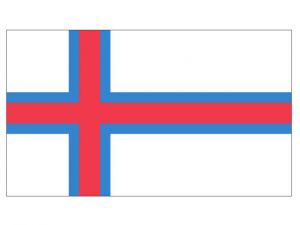Difference between revisions of "Language/Faroese/Grammar/Personal-Pronouns"
m (Quick edit) |
(No difference)
|
Revision as of 17:48, 1 April 2023
Learning personal pronouns is essential for anyone who wants to speak Faroese fluently. In this lesson, you will learn the Faroese personal pronouns for singular and plural forms, as well as the subject and object forms. You will also learn how to use them in sentences correctly.
Personal Pronouns
Personal pronouns are pronouns that refer to a specific person or thing. In Faroese, personal pronouns have singular and plural forms, as well as nominative and accusative case forms. The nominative case is used for the subject of a sentence, while the accusative case is used for the object of a sentence.
Singular Pronouns
Here are the singular pronouns in Faroese:
| Faroese | Pronunciation | English |
|---|---|---|
| eg (nominative) | yaih | I |
| meg (accusative) | mɛy | me |
| tú (nominative) | tu | you (singular) |
| teg (accusative) | tey | you (singular, object) |
| hann (nominative) | hawn | he |
| hann (accusative) | hawn | him |
| hon (nominative) | hone | she |
| hon (accusative) | hone | her |
| tað (nominative) | tah | it |
| tað (accusative) | tah | it |
Plural Pronouns
Here are the plural pronouns in Faroese:
| Faroese | Pronunciation | English |
|---|---|---|
| vit (nominative) | vɪt | we |
| okkum (accusative) | ɔkum | us |
| tit (nominative) | tɪt | you all (plural) |
| tykkum (accusative) | tʏkum | you all (plural, object) |
| tey (nominative) | tey | they |
| tey (accusative) | tey | them |
Keep in mind that the plural pronouns "vit" and "tey" can refer to groups of people or things of mixed gender.
Subject vs Object Pronouns
Subject pronouns are used when the pronoun is the subject of a sentence. Often subject pronouns come before a verb. Here are the subject pronouns:
- eg (I)
- tú (you)
- hann (he)
- hon (she)
- tað (it)
- vit (we)
- tit (you all)
- tey (they)
Object pronouns are used when pronouns receive an action in a sentence. These usually come after a verb, preposition or conjunction. Here are the object pronouns:
- meg (me)
- teg (you, object)
- hann (him)
- hon (her)
- tað (it)
- okkum (us)
- tykkum (you all, object)
- tey (them)
Examples
Here are some examples of personal pronouns used in sentences:
- Eg heiti Maria. (I am called Maria.)
- Tú havi eitt flott hús. (You have a nice house.)
- Hann elskar kettir. (He loves cats.)
- Hon át mat. (She ate food.)
- Tað er kalt uteftir. (It is cold outside.)
- Vit fara til Tórshavnar í dag. (We are going to Tórshavn today.)
- Tit eru so góð í føturballi. (You all are so good at football.)
- Tey syngja sera væl. (They sing very well.)
Remember, Faroese personal pronouns may be challenging to learn at first, but with regular practice, you will get the hang of them. Keep practicing and you will soon be able to use them with ease!
